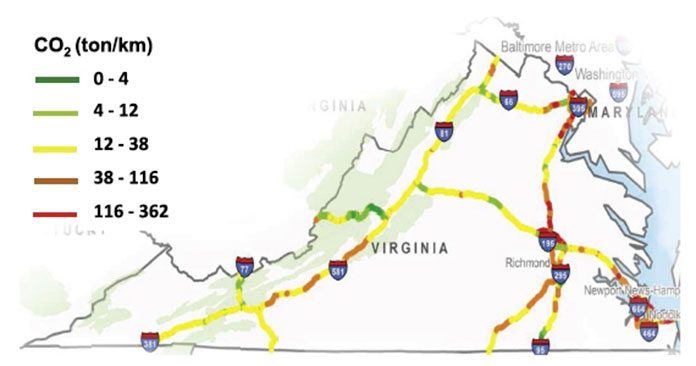Roads are an essential part of the transportation system. It also has a large contribution to greenhouse gas emissions. Scientists from MIT introduces a new data-driven approach to decrease roadway network emissions. They use big data to detect particular pavement portion where improvements may cause a large effect.
Scientists found that maintenance of just a few road miles allows for essential performance progress. It has very small impact on the environment beyond the whole network. After maintaining just 1.5 percent of roadway network causes 10 percent decrements in greenhouse gas emissions.
In the evolution of pavements, use-phase effects have historically been ignored because of on-time data and deficiency of efficiently computable tools. CSHub models regenerate the interplay between the wheel and pavement. This makes scientists observe interactions with increasing road conditions, pavement properties, traffic loads, and climatic conditions.
This method involves transportation agencies various databases. The databases are then combined with pavement-vehicle interaction (PVI) models. Ranking algorithms provide the shortest path to greenhouse gas emissions savings through maintenance at the network scale. This makes results to be measured and applied to state or national sustainability goals.
Louhghalam, the paper’s lead author, “The quantitative approach is less subjective than qualitative methods, and it’s easy to use. Decision makers can take more factors into account and make smart choices that are economically and also environmentally optimal.”
This study measures the effect of deflection-induced PVI and roughness-induced PVI on the overloaded fuel consumption of vehicles. Results showed that deflection-induced PVI is an important contributor to excess fuel consumption for trucks. Because of their higher weights, and roughness-induced PVI effects are larger for passenger vehicles, mainly due to higher traffic volume.
Scientists then compared this novel approach with other methods. They found that this novel data-driven approach reduce maximum CO2 emissions with less road mile maintenance.
Ulm said, “There is huge potential to improve efficiency and lower environmental impact through better design and maintenance of roadways. This work supports one of our major goals, which is to aid decision makers, including engineers and politicians, in thinking about infrastructure as part of the solution in a carbon-constrained environment.”
